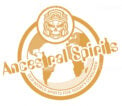River highways, forest gardens, and earthworks—complex societies woven through water and canopy.

Mesoamerica
Includes the Olmec, Maya, Zapotec, Mixtec, and Mexica/Aztec.

The Andes
Includes the Chavín, Moche, Nazca, Wari, Tiwanaku, and Inca.

South America
Includes the Chimor, Mochehe and Inca civilization in the Andes.

The Caribbean
Includes the Taíno, Carib, and the Arawak from the Eastern and Western Caribbean Islands
Quick Facts
- Major cultures: Marajoara, Santarém, Tapajó; Acre geoglyph builders; diverse riverine societies
- Timeframes: c. 1000 BCE – contact (varies by sub-region)
- Notable customs & beverages: terra preta (anthropogenic soils), ritual feasts; chicha variants
- Languages/scripts: Arawakan, Tupian, Carib families; no indigenous script tradition attested
Timeline of the Ancestors
- 1000 BCE–1 CE — Early forest villages — Riverine settlements and managed landscapes.
- 1–1000 CE — Earthworks & geoglyphs — Acre region formations; regional polities.
- 400–1300 CE — Marajoara & Santarém — Elaborate ceramics, ritual iconography at river mouths.
Peoples & Cultures
- Marajoara — Amazon delta mound-builders; fine polychrome pottery.
- Santarém/Tapajó — Figurative ceramics; trade nodes.
- Acre builders — Geometric earthworks in upland forests.
Sites & Landscapes
- Marajó Island — Mound complexes and cemeteries.
- Tapajós region — Ceramic centers near Santarém.
- Acre uplands — Geoglyph fields.
Customs & Beverages
- Rituals: feasting, ancestor veneration.
- Daily life: manioc processing, fishing, forest horticulture.
- Beverages: chicha (manioc/maize), fruit ferments.
Artifacts & Iconography
- Marajoara urns, Santarém figurines, stone/earthen works.
Language & Scripts
- Languages: Arawakan, Tupian, Carib.
- Writing: none attested.
Further Reading & Sources
- Add 3–6 reputable sources or museum pages here.



